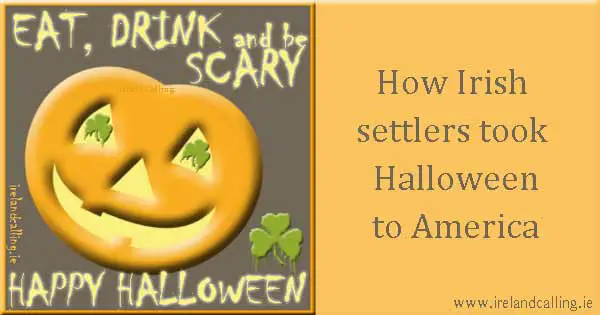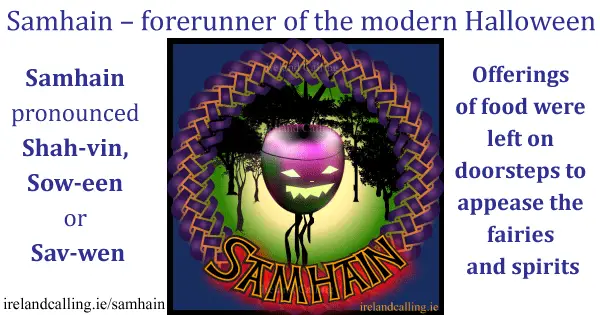This week millions of children around the world will dress up in scary costumes and play pranks on their neighbours to celebrate Halloween.

The holiday has become the one of the biggest commercial events in the American calendar, but the traditions actually originated in Ireland.
Halloween was first introduced to America in the 1840s by Irish settlers who had emigrated following of the potato famine. The holiday that we enjoy today has changed quite a bit from the ancient Celtic festival it came from, although some of the customs and traits can still be compared.
Boundary between dead and living blurred
The ancient Celts would celebrate the festival of Samhain (pronounced sa-win) from sunset on the 31st October until sunrise on the 1st November each year.
Samhain marked the end of the summer and the beginning of the winter, the darker half of the year. It was also believed that Samhain was the time when the boundary between the world’s dead and the world’s living was most blurred.
People made offerings to fairies to ask for protection over the winter. The dead were also at the forefront of the festival and places at the table would be set for those family members that had passed.
Samhain would fall around the time of the last harvest of the year, so traditions such as carving out a pumpkin and bobbing for apples can be dated back to the Celtic festival. Apple bobbing is still a popular ritual at Halloween parties today, but the original significance was that the first unmarried person to successfully bite an apple, would be the next one to get married.
Hollowed out animal heads worn as masks
Trick or treating now involves children visiting the houses of their neighbours and threatening a mischievous prank, if they don’t receive sweets and chocolates. In the ninth century, Europeans would walk from village to village begging for soul cakes in return for their prayers.
As recently as the 1950s and 60s, children in Ireland would not go out trick or treating at Halloween, but go out on ‘Mischief night’ where unhinging garden gates and knocking over bins and were the main examples of mischief.
The art of dressing up in scary costumes can also be traced back to the Celtic festival of Samhain. The costumes used by the Celts included hollowed out animal heads worn as masks, with the intention of scaring away evil spirits. Today’s outfits of sexy witches and famous characters from blockbuster films seem quite tame in comparison.
Discover more about Samhain
Irish Symbols – each with their own fascinating origins and still relevant today
Celtic Cross
Brigid’s Cross
How Ireland protects its harp and shamrock emblems…take care if using them
Why the Guinness harp faces the opposite way to the official Irish harp
More popular articles and videos
The real life mystery of what Maureen O’Hara whispered to make John Wayne look so shocked
Matt Damon winning hearts and minds with charm assault on Ireland
Action hero Tom Cruise was once attacked by an old man in a Kerry pub
Liam Neeson speaks about his late wife in emotional interview
Dating site explains why Irish men make wonderful husband material
Billy Connolly says public should ignore politicians and listen to comedians
Take a look inside Hollywood star Saoirse Ronan’s stunning Irish home


